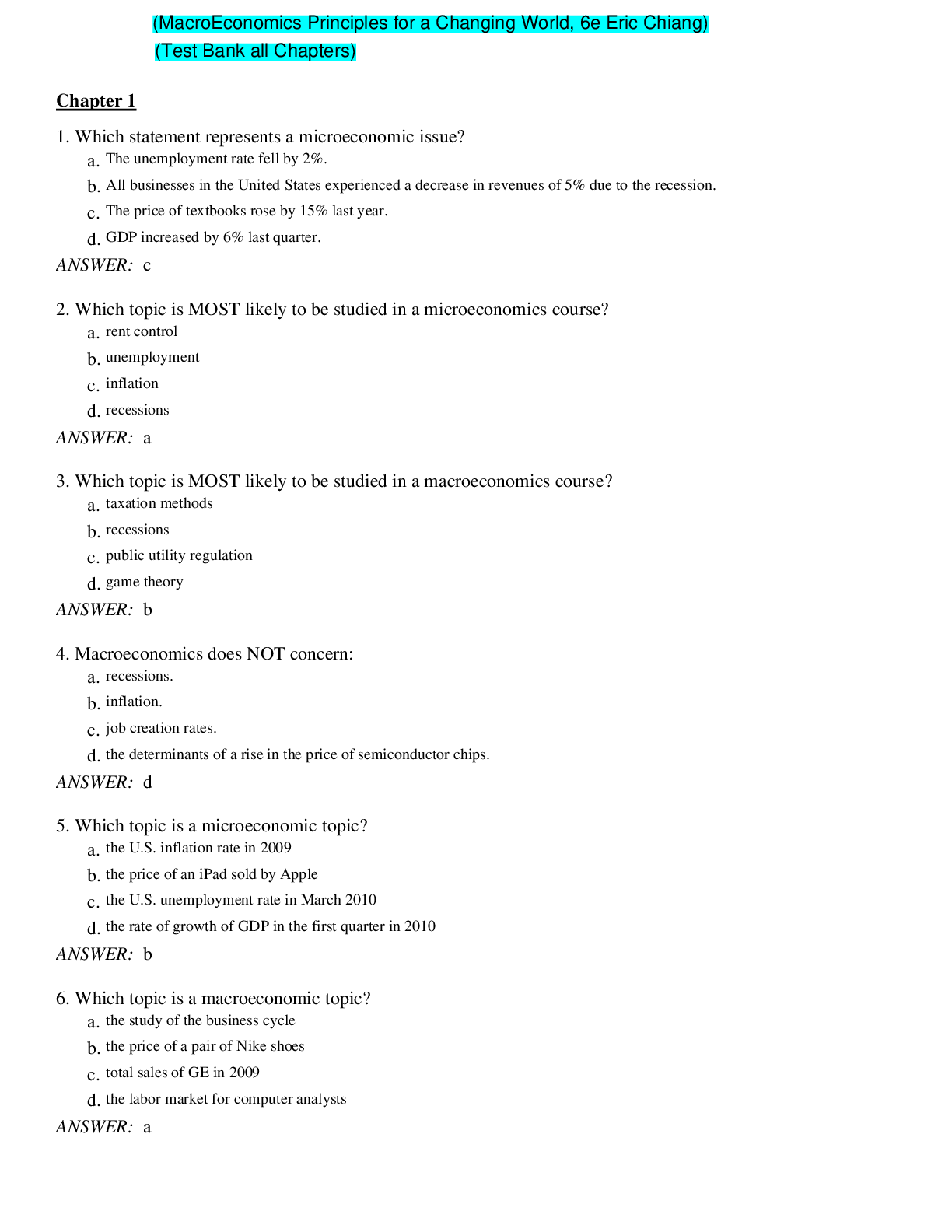Economics Principles for a Changing World, 6e Eric Chiang (Test Bank)
Document Content and Description Below
Chapter 1 Introduction to Economics 1.1 What Is Economics About? Why Study Economics? Microeconomics versus Macroeconomics Data and Models Efficiency versus Equity Issue: Do Economists Ever Agre... e on Anything? Positive versus Normative Analysis 1.2 Key Principles of Economics Principle 1: Economics Is Concerned with Making Choices with Limited Resources Principle 2: When Making Decisions, One Must Take into Account Tradeoffs and Opportunity Costs Principle 3: Specialization Leads to Gains for All Involved Around the World: Nunavut: Land of Abundance and Scarcity Principle 4: People Respond to Incentives, Both Good and Bad Issue: Would a City Change Its Name for a Game Show? Principle 5: Rational Behavior Requires Thinking on the Margin Principle 6: Markets Are Generally Efficient; When They Aren’t, Government Can Sometimes Correct the Failure Principle 7: Economic Growth, Low Unemployment, and Low Inflation Are Economic Goals That Do Not Always Coincide Principle 8: Institutions and Human Creativity Help Explain the Wealth of Nations Adam Smith (1723–1790) Summing It All Up: Economics Is All Around Us Chapter 1 Summary Key Concepts Questions and Problems Answers to Questions in Checkpoints Chapter 1 Appendix: Working with Graphs and Formulas Graphs and Data Graphs and Models Analyzing Relationships Between Variables Chapter 2 Production, Economic Growth, and Trade 2.1 Basic Economic Questions and Production Basic Economic Questions Factors of Production Phyllis Wallace (1921–1993) Production and Efficiency Around the World: Ironbridge: The Beginnings of the Industrial Revolution 2.2 Production Possibilities and Economic Growth Production Possibilities Economic Growth Issue: Is the Ocean the Next Frontier? Underwater Cities and Land Reclamation 2.3 Specialization, Comparative Advantage, and Trade Absolute and Comparative Advantage Gains from Trade Practical Constraints on Trade Issue: Would You Pay $200 for a Pair of “Made in USA” Sneakers? Chapter 2 Summary Key Concepts Questions and Problems Answers to Questions in Checkpoints Chapter 3 Supply and Demand 3.1 Markets The Price System Issue: Do Markets Exist for Everyone, Including Dogs and Cats? 3.2 Demand Willingness-to-Pay: The Building Block of Market Demand The Law of Demand: The Relationship Between Quantity Demanded and Price The Demand Curve Determinants of Demand Changes in Demand versus Changes in Quantity Demanded 3.3 Supply The Law of Supply: The Relationship Between Quantity Supplied and Price The Supply Curve Determinants of Supply Changes in Supply versus Changes in Quantity Supplied Alfred Marshall (1842–1924) 3.4 Market Equilibrium Around the World: Tokyo Disneyland: Is THAT the Line for Space Mountain?! Moving to a New Equilibrium: Changes in Supply and Demand Issue: Two-Buck Chuck: Will People Drink $2-a-Bottle Wine? [Show More]
Last updated: 8 months ago
Preview 1 out of 2164 pages
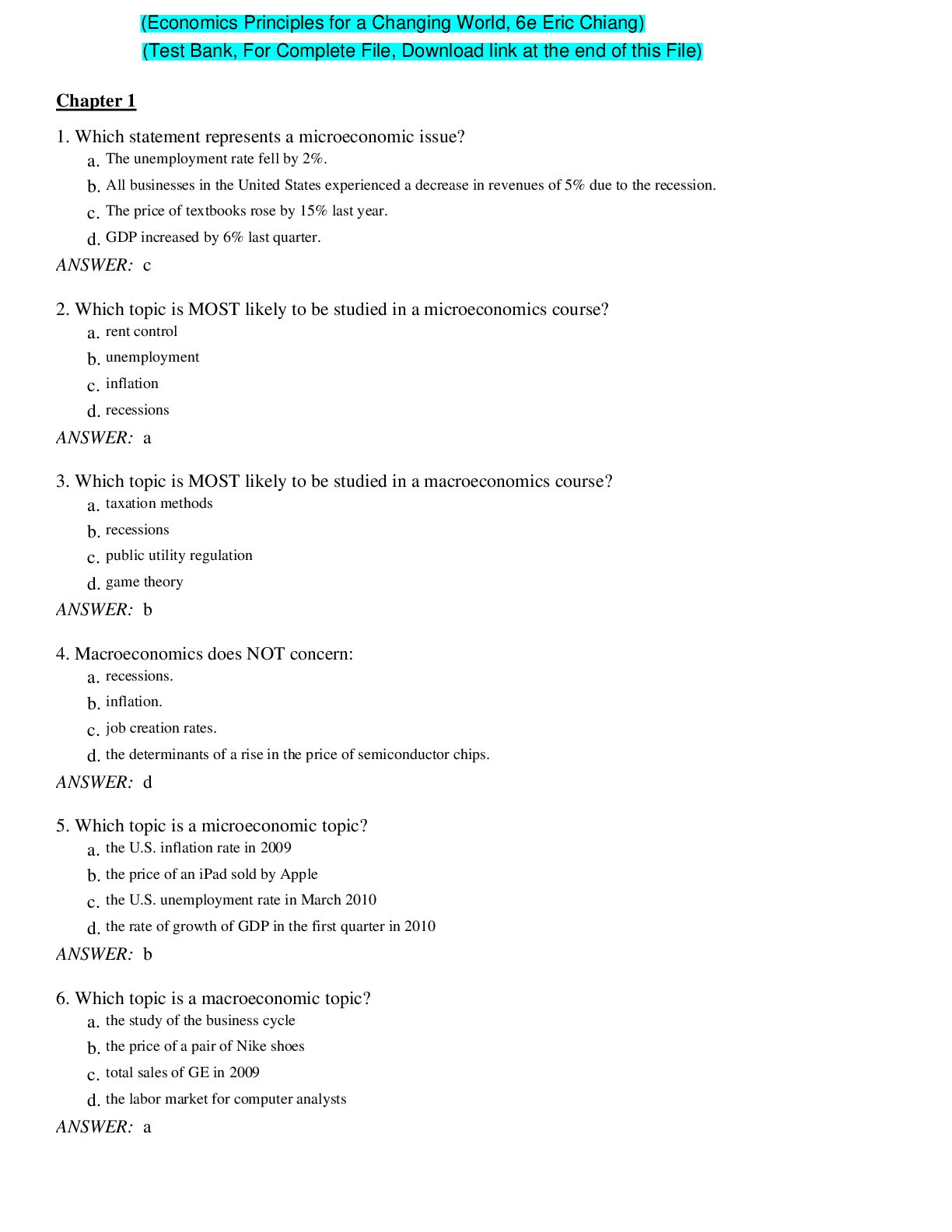
Reviews( 0 )
Document information
Connected school, study & course
About the document
Uploaded On
May 18, 2023
Number of pages
2164
Written in
Additional information
This document has been written for:
Uploaded
May 18, 2023
Downloads
0
Views
44

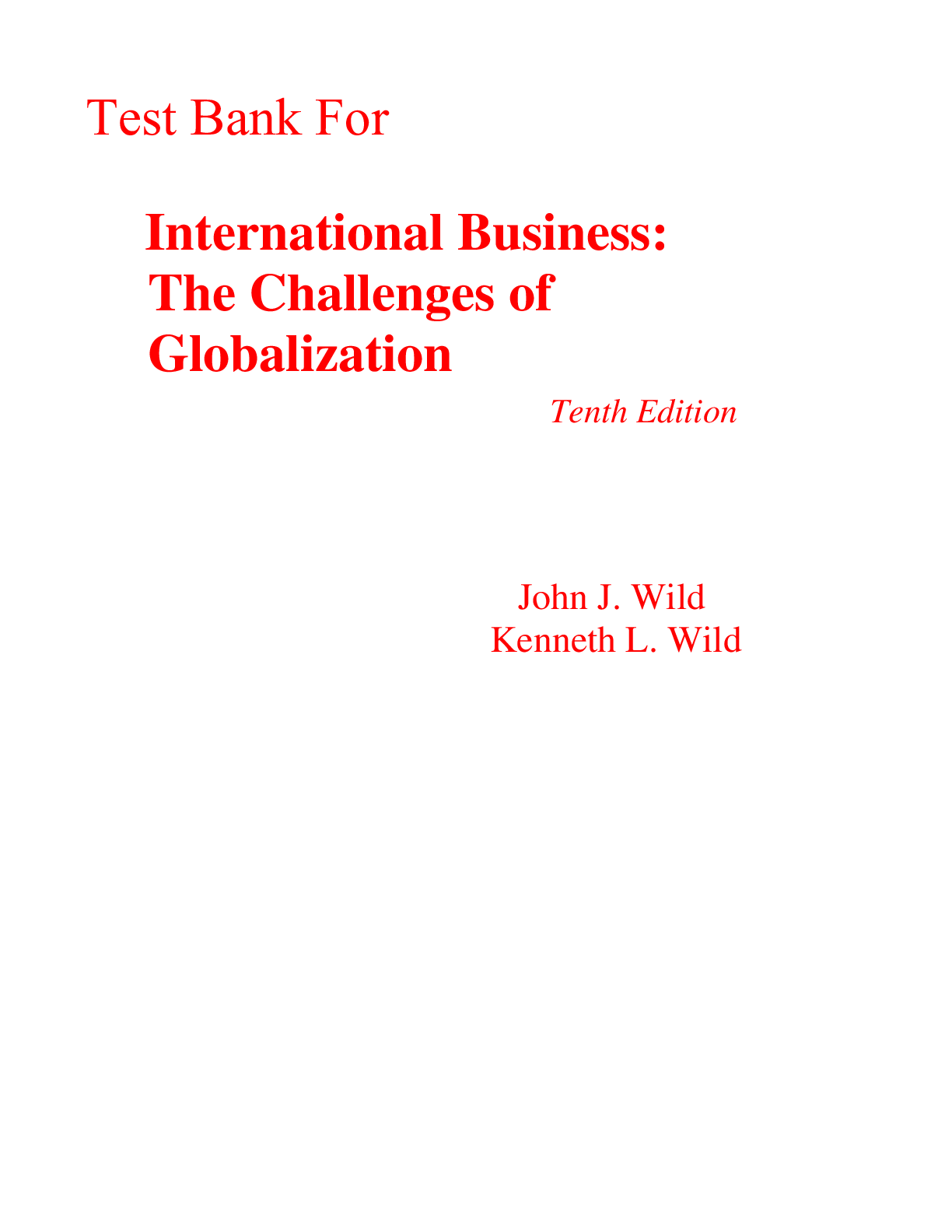

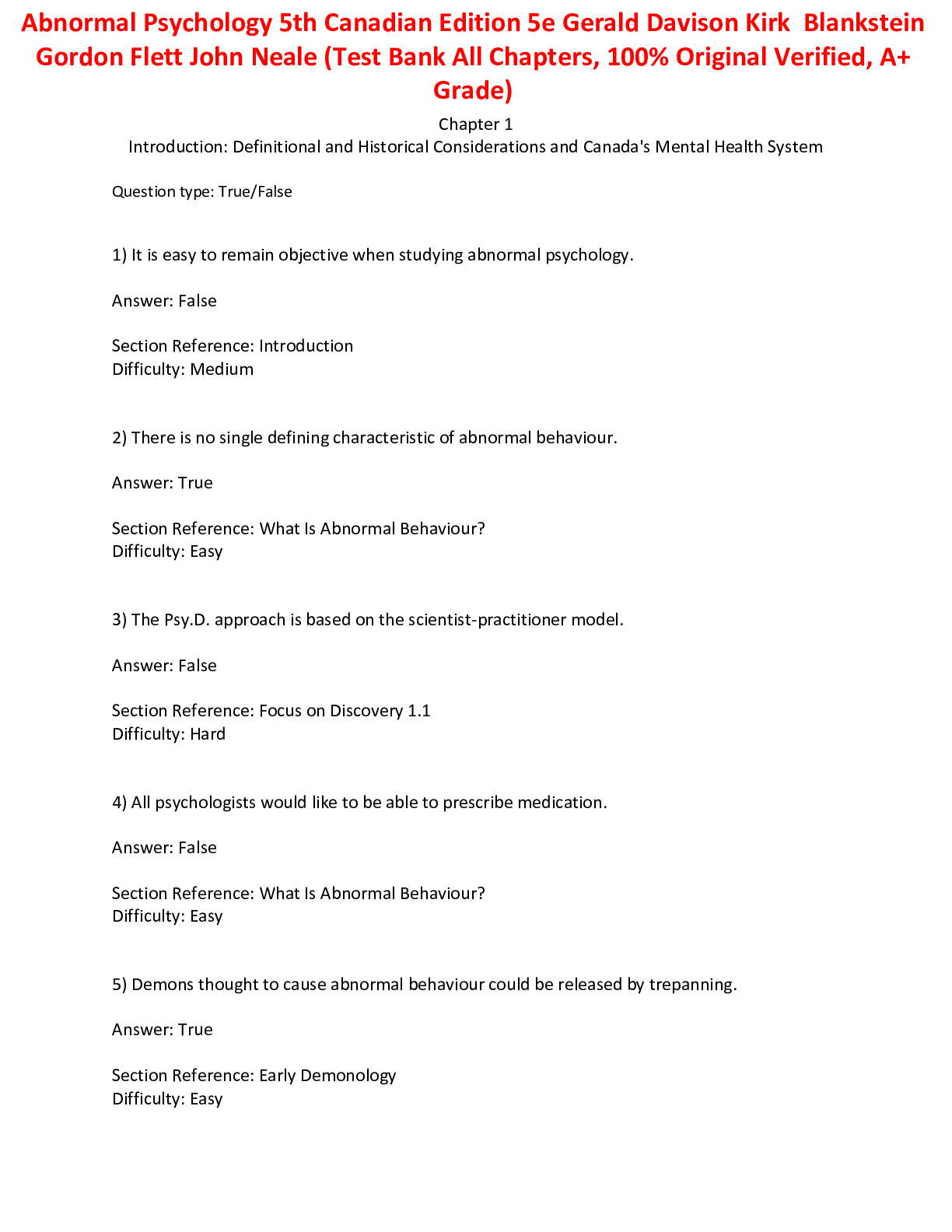
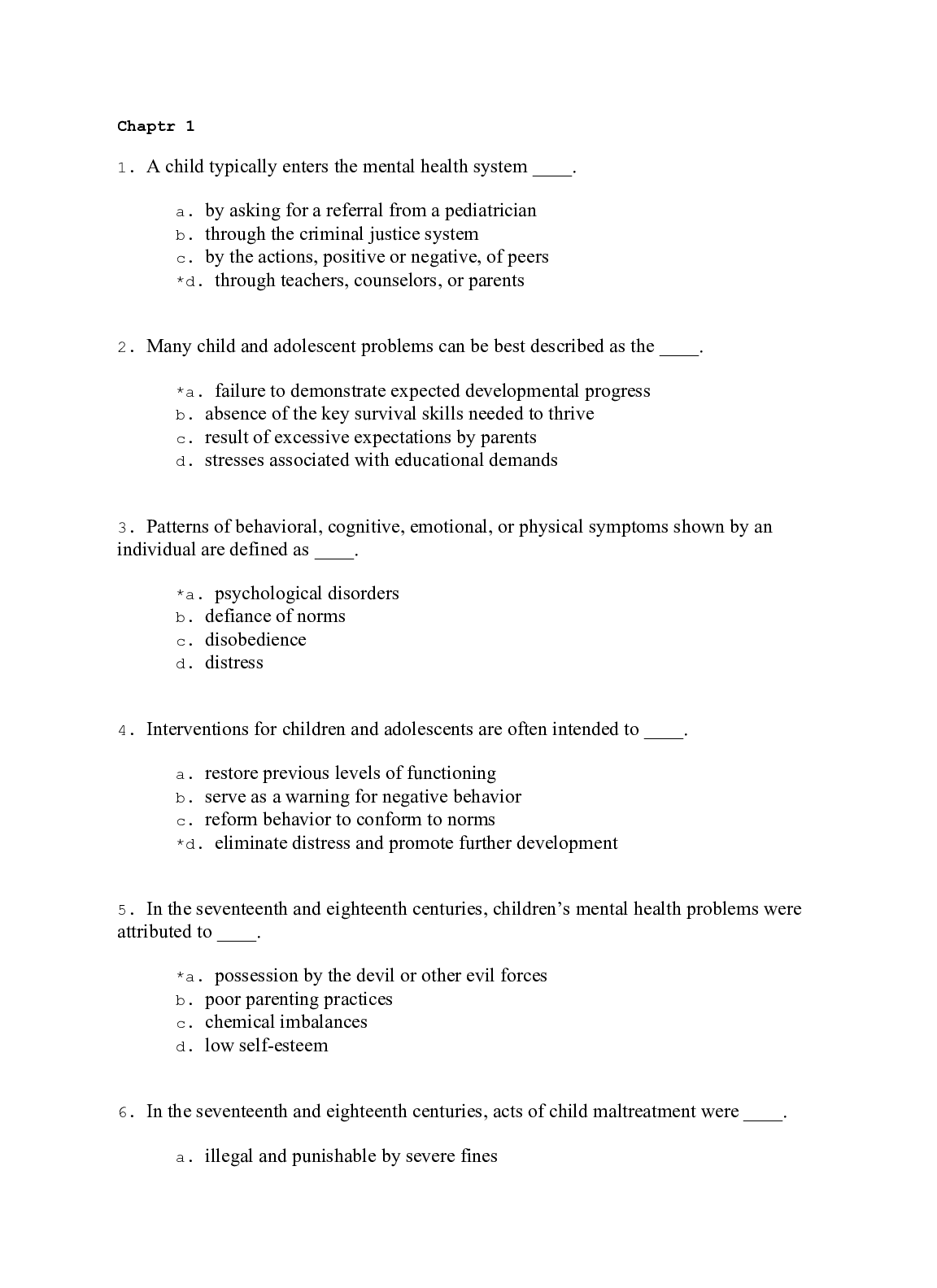


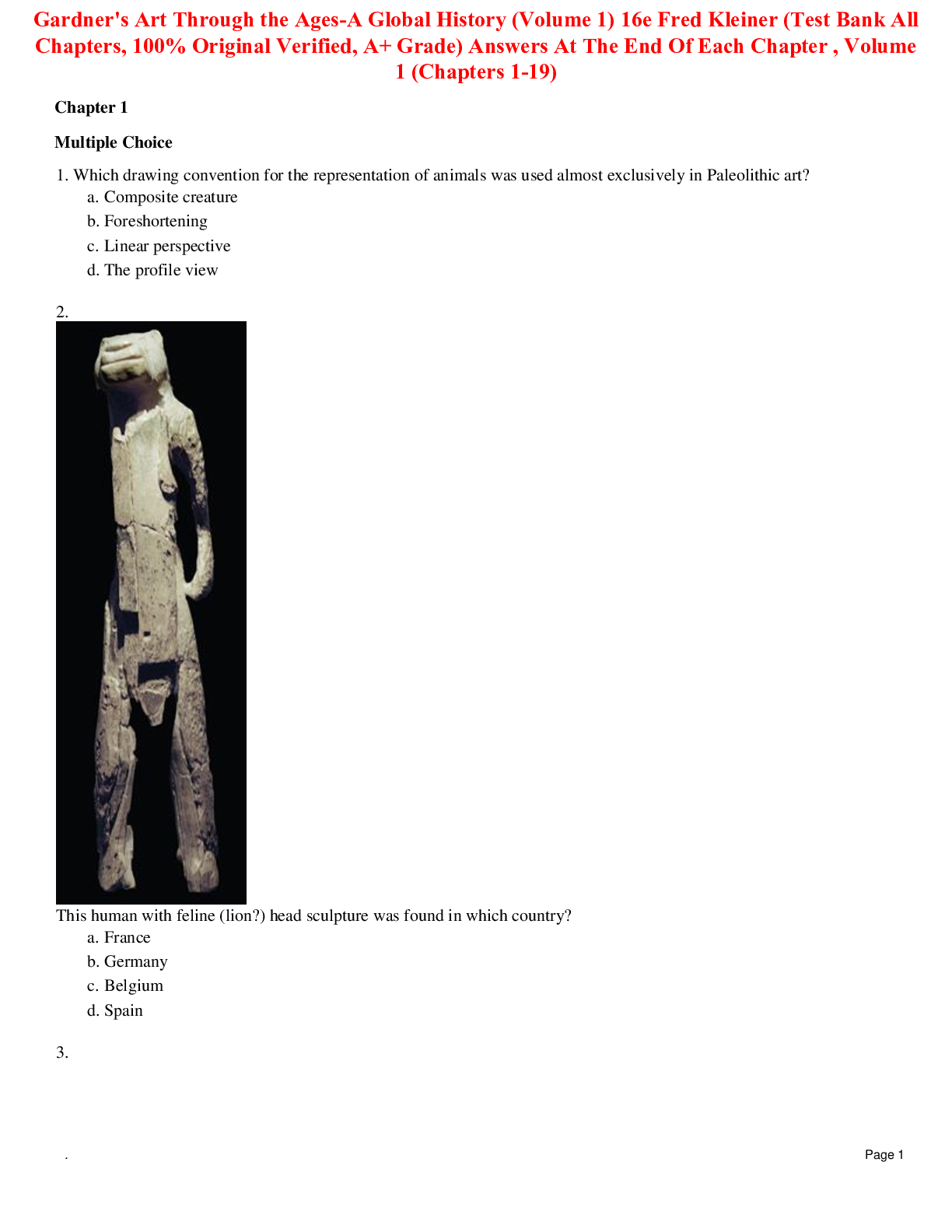






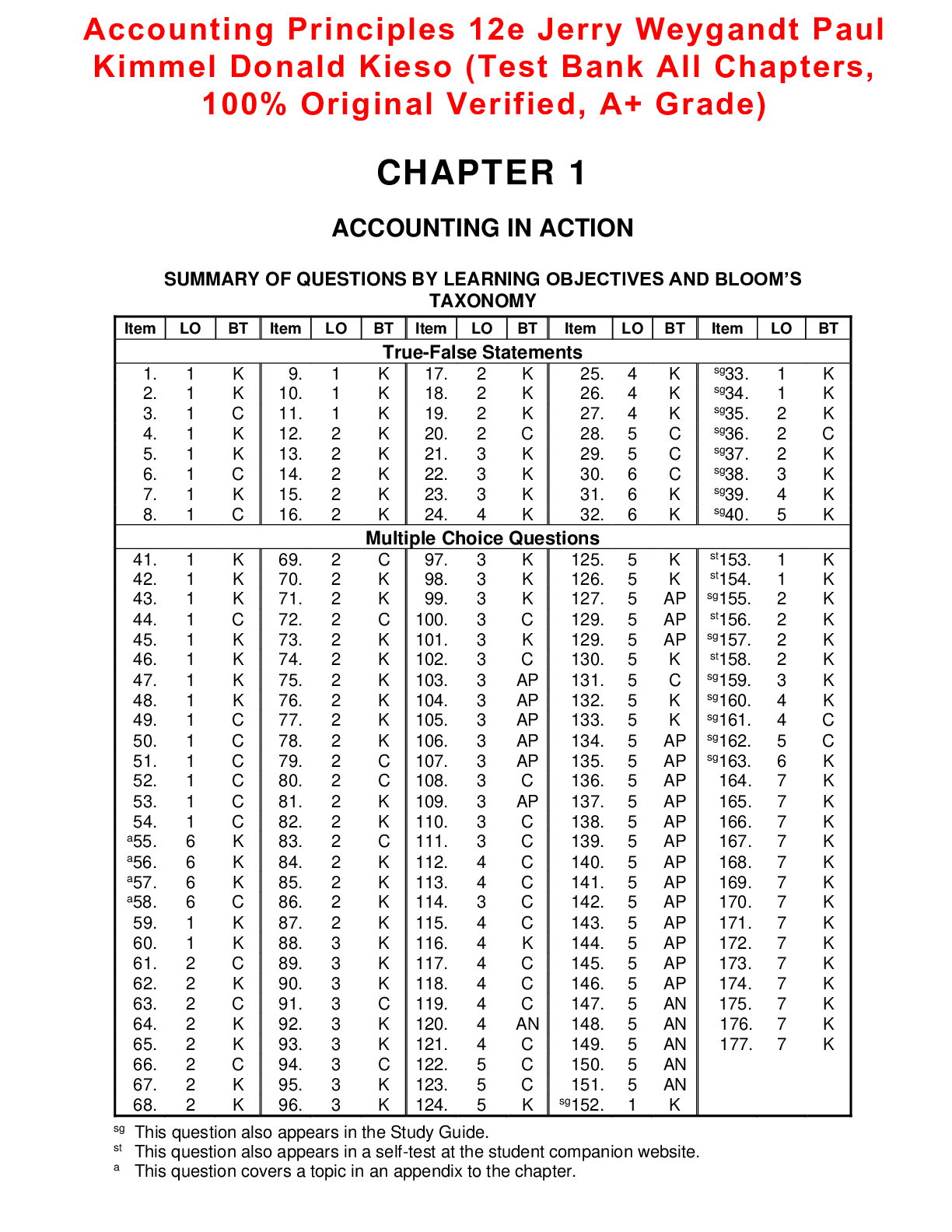
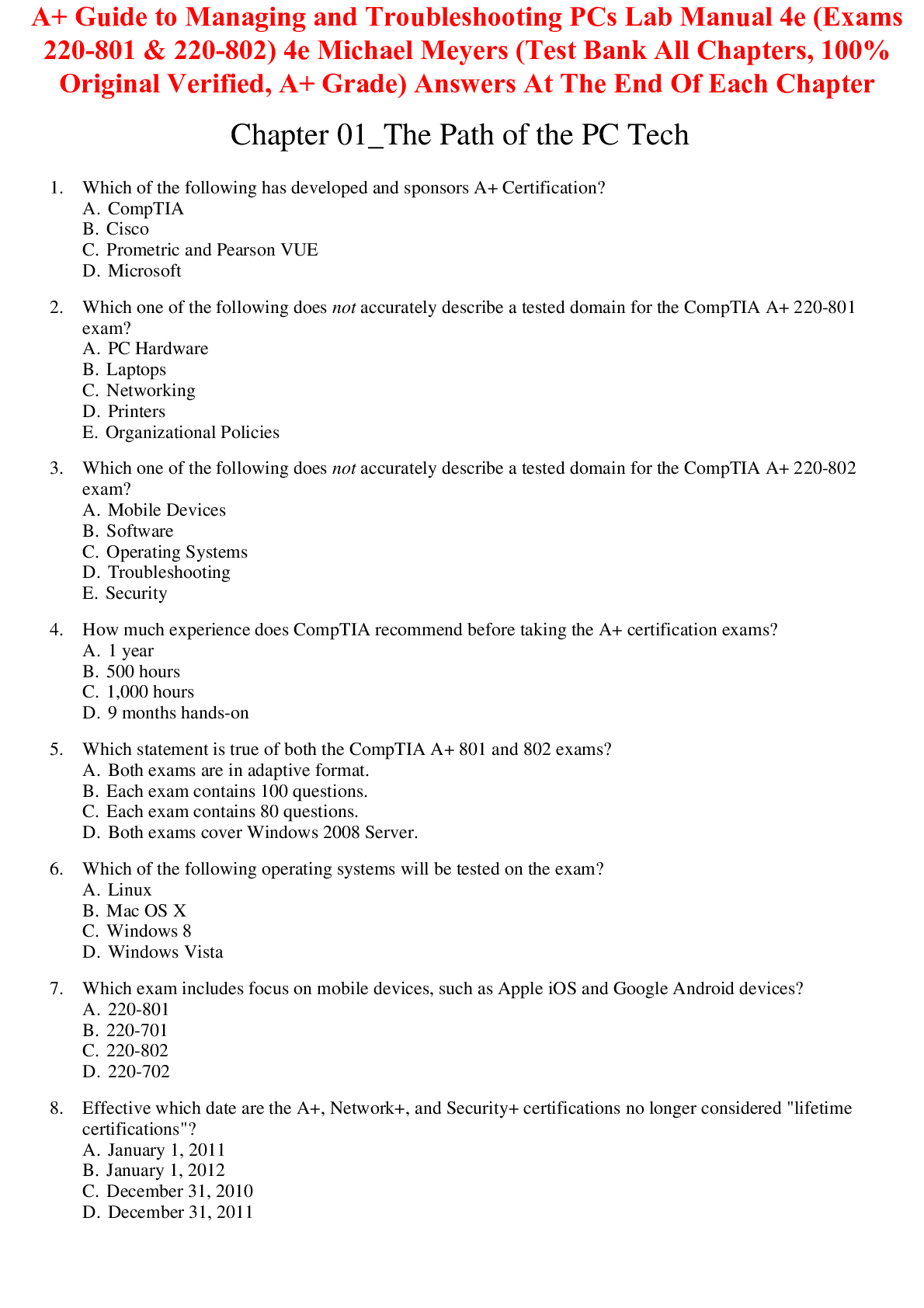
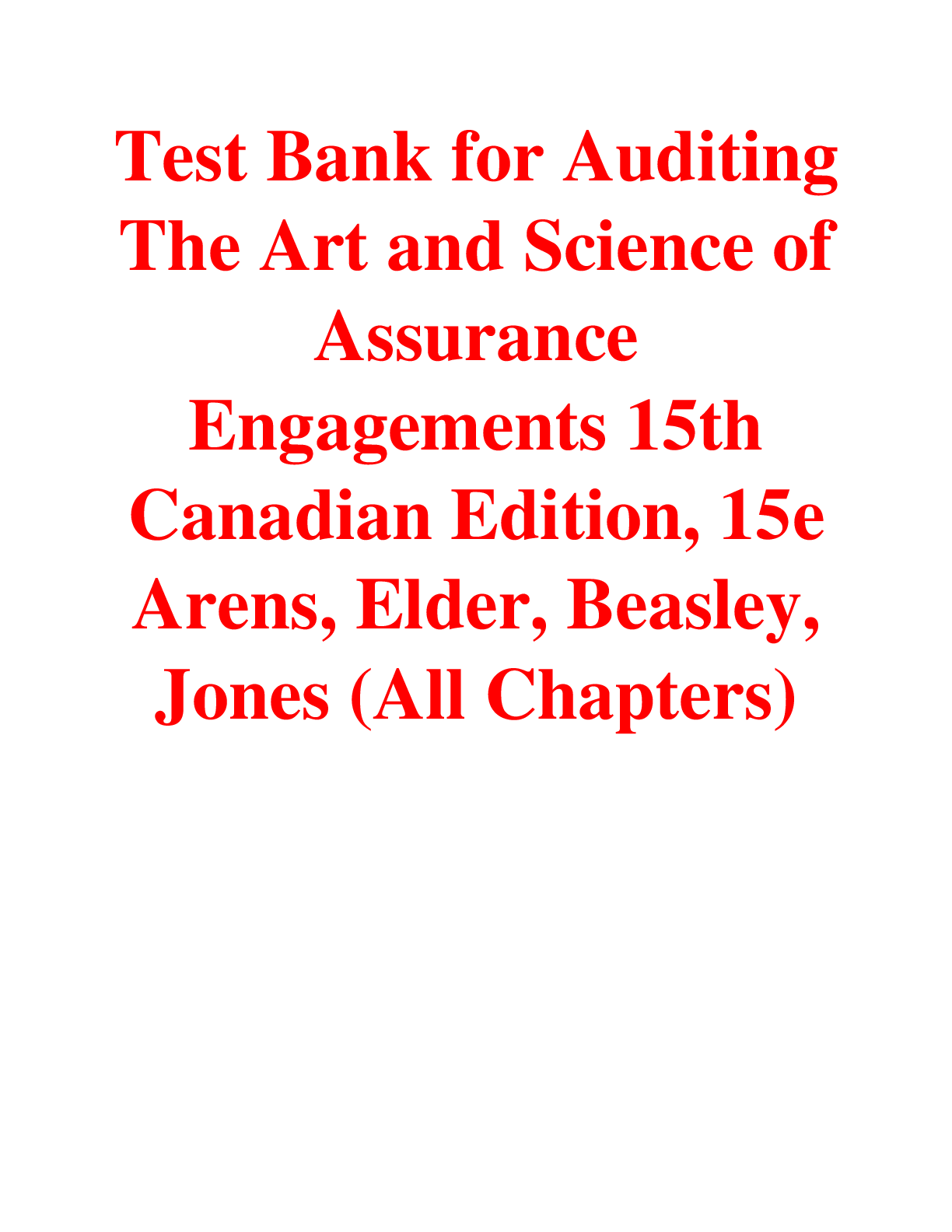
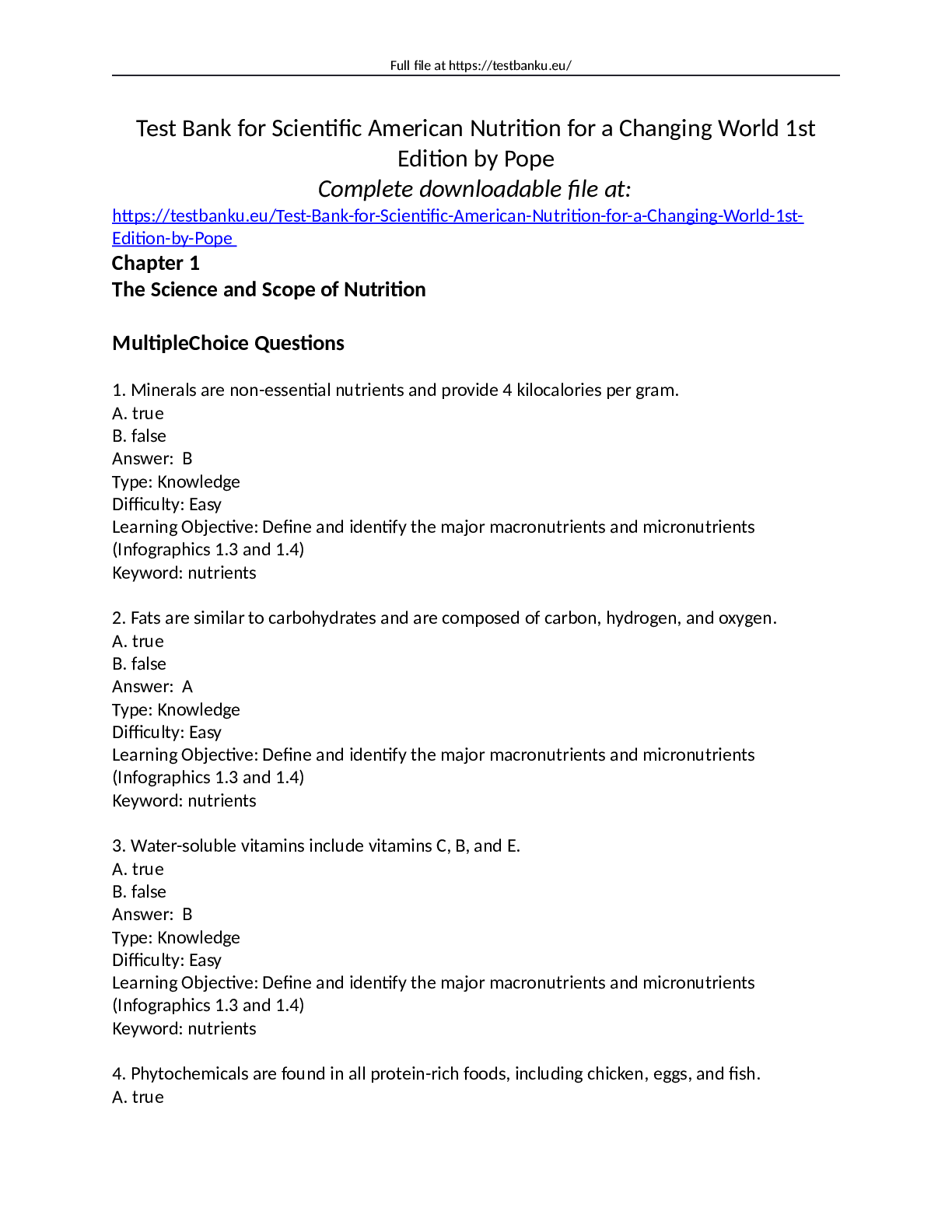

.png)
.png)
.png)
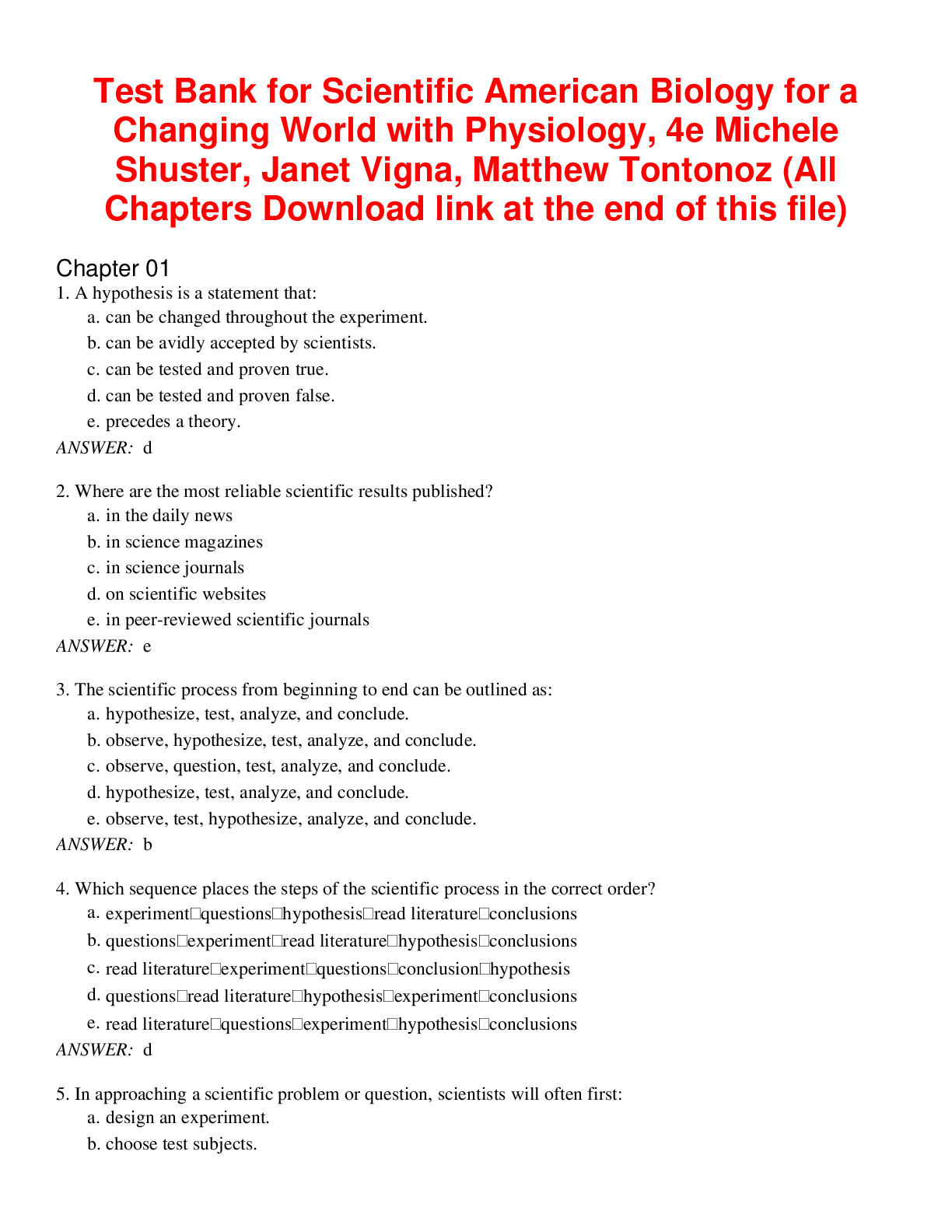
.png)
.png)
.png)
.png)
.png)
.png)
.png)
.png)
.png)


